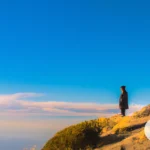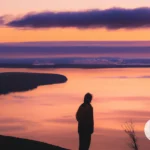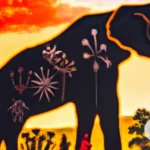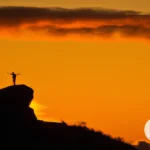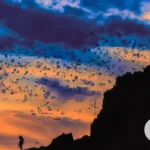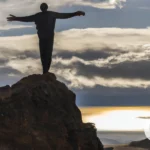There comes a time in many people’s lives when they feel a need to step back from the chaos of their daily routines and seek a deeper understanding of themselves and their place in the world. One way to achieve this is through a Vision Quest, a traditional Native American practice that has been utilized for centuries. Joshua Tree National Park provides an ideal setting for such a quest, with its rugged beauty and natural serenity. In this article, we will explore the transformative qualities of a Vision Quest in Joshua Tree, taking you step-by-step through the preparation, journey, and inner work required to fully experience this profound and enlightening adventure.
What is a Vision Quest?
Vision Quest is a traditional Native American ceremony that involves entering the wilderness in search of spiritual guidance and personal growth. During the quest, the participant spends several days alone without food or water, relying solely on nature to provide sustenance and answers.
The purpose of a Vision Quest is to gain clarity and purpose in life, through introspection and connecting with nature. It is believed that the solitude and hardships faced during the quest provide an opportunity for an individual to confront their inner struggles and limitations, ultimately leading to a transformative experience.
While the Vision Quest is a Native American tradition, similar practices are found in shamanic cultures around the world, such as Machu Picchu, Sedona, Pyramids of Giza, Stonehenge, or Uluru. These practices recognize the power of nature and the spiritual realm in helping individuals find their purpose and place in the world.
Why Joshua Tree?
Joshua Tree National Park is a unique and stunning location that offers the perfect setting for a vision quest. Here are some of the reasons why Joshua Tree is the perfect location for this transformative experience:
- Natural Beauty: Joshua Tree’s sprawling desert landscape and unique rock formations are breathtaking and offer a serene and peaceful backdrop for introspection and contemplation.
- Spiritual Significance: The area has long been considered sacred by many indigenous cultures, making it a powerful location for spiritual exploration and self-discovery.
- Remote Location: Joshua Tree’s remote location and lack of modern amenities can help individuals disconnect from the distractions of daily life and focus on inner work.
- Climate: The area’s dry and mild climate is ideal for prolonged outdoor activities and offers a comfortable setting for sleeping under the stars.
- Accessibility: The park’s proximity to Los Angeles and other major cities makes it an easy location to reach, while still feeling like a world away from civilization.
Joshua Tree’s natural beauty, spiritual significance, remote location, climate, and accessibility make it the perfect location for a transformative vision quest.
The Preparation
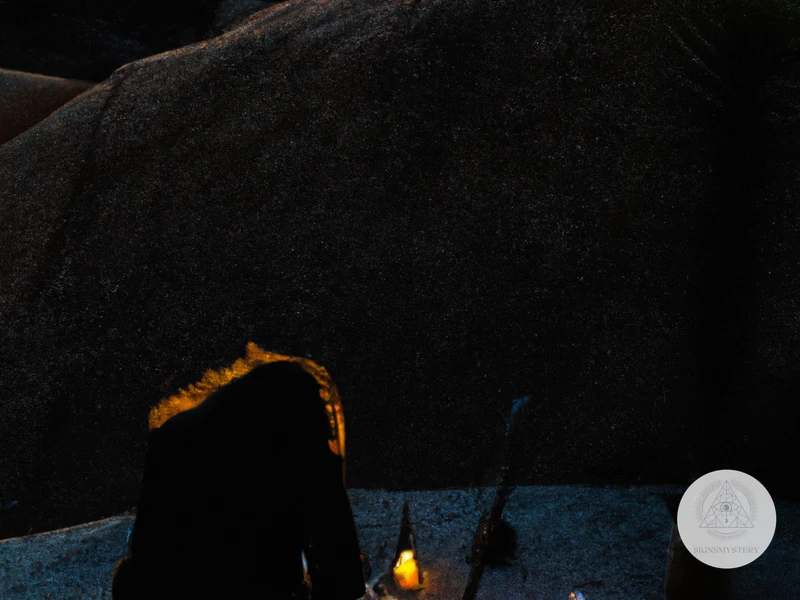
Before embarking on a vision quest, it’s essential to have a clear intention and mentally prepare for the journey. This includes setting a goal for what you want to achieve from the experience. Taking time to reflect and ask yourself what you truly want to learn, overcome, or accomplish can help clarify your objectives. It’s also important to mentally prepare for spending extended periods alone in the wilderness. Consider journaling or meditating on your fears, expectations, and hopes for the quest.
In addition to mental preparation, physical preparations are necessary before venturing into the wilderness. Depending on the length of your quest, preparing your body through exercise and endurance training is recommended. It’s also important to bring the necessary supplies, such as a tent, sleeping bag, food, water, and appropriate clothing. Make a list of everything you will need and double-check it before leaving. It’s crucial to have everything necessary for comfort and survival during the quest.
If you’re new to camping and wilderness, consider taking a shamanic wisdom course or attending a workshop to learn survival skills, basic first aid, and wilderness safety. This can help prepare you for potential challenges that may arise on the journey.
Here’s a table to summarize the physical preparation:
| Supplies | Considerations |
|---|---|
| Tent | Make sure it’s waterproof and easy to set up. |
| Sleeping Bag | Choose one that’s lightweight and suitable for the temperature range. |
| Food and Water | Bring high-energy, non-perishable food and plenty of water. |
| Clothing | Dress in layers and bring appropriate clothing for the temperature and weather conditions. |
| Basic First Aid Kit | Include any necessary medications, bandages, and antiseptics. |
| Survival Kit | Include matches, a flashlight, a compass, and a map of the area. |
Mentally Preparing for a Vision Quest
Mentally preparing for a vision quest is just as important as preparing physically. Here are some tips to help you ready your mind and spirit for this transformative experience:
- Set intentions: Before embarking on your quest, ask yourself what you hope to gain from it. Are you seeking clarity, guidance, or healing? Whatever your intentions may be, make sure they are clear and specific.
- Practice mindfulness: Take time to ground yourself and be present in the moment. This can be done through meditation, deep breathing, or simply spending time in nature. Practicing mindfulness can help you stay focused during your quest.
- Release attachments: Let go of any expectations or preconceptions you may have about your experience. Trust in the process and let go of any attachments to the outcome.
- Face your fears: A vision quest can be a challenging and even scary experience at times. Take some time to reflect on any fears or doubts you may have, and make a conscious effort to face them head-on.
- Connect with a mentor: If possible, seek out the guidance of a shaman, spiritual teacher, or mentor who can help guide you through the process.
Remember that the mental preparation for a vision quest is a personal and individualized journey. Take the time to reflect on your own needs and desires, and trust in your own inner guidance. With a clear and open mind, you can embark on this transformative journey with confidence and clarity.
Physical Preparations and Supplies
Physical preparations and supplies are crucial for a successful vision quest at Joshua Tree National Park. First and foremost, it is important to pack appropriate clothing that can handle the desert climate, including hats, sunglasses, long-sleeved shirts, and lightweight pants. Sunscreen and insect repellent are also necessary to protect your skin from the hot sun and pesky bugs.
Another crucial aspect is staying hydrated, so make sure to bring plenty of water and electrolyte supplements such as tablets or powders. It’s a good idea to have a water filtration system as well in case you need to refill your water supply from natural sources.
When it comes to food, it’s important to bring non-perishable items such as nuts, dried fruits, and energy bars. A camp stove or portable grill may also come in handy for cooking meals. Don’t forget to pack a first-aid kit containing items such as bandages, antiseptic, and pain relievers.
In terms of gear, make sure to bring a sturdy backpack to carry all of your supplies during the journey. A high-quality sleeping bag, lightweight tent or sleeping pad, and warm layers for the chilly desert nights are also necessary. It’s also important to have a map and compass for navigation.
Being well-prepared physically will help to ensure a safe and comfortable vision quest experience at Joshua Tree National Park.
The Journey
is a crucial part of any vision quest experience. This is the time in which participants leave all distractions behind and fully embrace the wild surroundings of Joshua Tree. The journey is a physically and emotionally demanding process which includes long hikes and camping in the wilderness.
Entering the Wilderness is not just about setting foot in the natural environment but also a journey of self-discovery. The wilderness provides an opportunity to connect and explore oneself intimately. During this journey, participants leave behind their old selves and step into a new phase of life with different perspectives.
Solo Time is an integral part of the journey. During this time, people spend time alone in the wild, distancing themselves from the group activity. Being alone in the wild leads to profound thoughts and helps people introspect about themselves, their lives, and the world around them. Participants often use this time for deep soul-searching, summoning the energy of the Earth and reconnecting with nature.
Returning to the Group provides people with an opportunity to share their insights, visions, and experiences. During this time the group shares stories and experiences with each other, providing a foundation for mutual respect, trust, and growth through vulnerability. Participants can gain insights and perspectives from one another, and develop deep bonds that can last for a lifetime. This is a critical time as people can learn a lot by sharing their experiences and supporting each other.
A vision quest journey is unlike any other journey. It involves a deep connection to nature and an exploration of oneself. The journey helps find a new meaning of life, tuning into the spiritual world, and discovering hidden strengths. The experience helps to gain a better perspective on life and unlocks the power within. Those who have been on similar experiences such as Shamanic wisdom Bali Sacred Sites, Spiritual meaning of Great Barrier Reef in Shamanism or Arctic Circle Shamanism will attest to how profound this experience can be.
Entering the Wilderness
Entering the Wilderness is the beginning of the Vision Quest experience. It is a moment of leaving behind all the distractions of the modern world and embracing the unknown. Here are some essential things that you need to keep in mind before venturing out into the wilderness.
| Check Your Gear | Ensure that you have all the equipment necessary for the Vision Quest. Make a list of everything you need and review it multiple times. Take only the items that will be necessary and keep in mind that you will be carrying all your equipment on your back during the quest. |
| Map Reading | A good map is crucial when it comes to venturing into the wilderness. Make sure you are familiar with maps of the area, and carry them with you at all times. It is also advisable to learn how to use a compass since electronic navigation devices may not work in some areas. |
| Know the Weather | Before embarking on your quest, check the weather forecasts for the days you plan to be out. Keep in mind that weather conditions can change quickly, especially in the desert. Bring appropriate clothing and gear considering the expected weather conditions. |
| Hydration | Staying hydrated is essential when out in the desert since it can be very hot and dry. Carry enough water and electrolyte solutions to keep yourself hydrated throughout the Quest. It is also very important to know where the water sources are and how to purify water if need be. |
| Safety Precautions | Safety should be your utmost priority when venturing into the wilderness. Learn how to avoid any wildlife encounters and snakes. Keep a distance from unknown animals. Bring a first aid kit and a whistle, in case of emergencies. Also, have a plan if things go wrong and make sure others know of your whereabouts before leaving. |
Entering the wilderness is a humbling experience. It is a moment of embracing nature and discovering the world around with new eyes. As you begin walking into the desert, remember to stay alert, be aware of your surroundings, and most importantly be present in the moment. The journey is just beginning!
Solo Time
After spending some time with the group, it is time to venture on your own. During this Solo Time, you will truly begin your vision quest. This is a time for self-discovery, introspection, and contemplation. You will be challenged physically and emotionally, but it is all part of the process.
Plan to spend at least 24-48 hours alone in the wilderness. This may seem daunting, but it is a necessary part of the journey. You will be surprised how quickly you become attuned to your surroundings and how mother nature can help heal your soul.
It is important to leave behind any distractions during your . No technology, no books, no distractions of any kind. This will allow you to fully connect with yourself, nature, and the universe.
During your solo time, you may experience a range of emotions. It is common to feel a sense of loneliness, anxiety, and fear. But as you push through these initial emotions, you will eventually realize that you are never truly alone, and that the universe is guiding you on your journey.
One of the best things you can do during this time is practice mindfulness and meditation. This will help you become more present and aware of your surroundings. Try to focus on your breathing and immerse yourself in the moment.
Some people may also experience dreams, visions, and insights during this time. This is a sign that you are truly connecting with your inner self and the universe. Be open to these experiences and take note of anything that comes to mind.
Remember, this solo time is an essential part of your vision quest and a unique opportunity for self-discovery. Embrace it fully and allow it to transform you.
Returning to the Group
Once the solo time has come to an end, it’s time to return to the group. This can be a challenging transition for many individuals, as the quiet and introspective nature of the solo time may have created a sense of detachment from others. However, returning to the group provides an opportunity to share experiences, gain support and celebrate each other’s journey.
It’s important to approach the group with an open mind and heart. Listen intently to other participants as they share their stories and insights. The act of active listening and empathizing can deepen your own process of healing and growth.
Returning to the group can help you gain a deeper appreciation for the power of community. As you listen and connect with others, you may find that your experience has many parallels with theirs. This can be comforting, and it can also inspire you to bring the lessons and insights you have gained from your Vision Quest back into your daily life alongside new connections.
Lastly, the group can help hold you accountable for integrating the lessons you gained during your solo time. The support and encouragement from others can be a crucial factor in remaining committed to personal growth and implementing the insights gained during your Vision Quest.
Returning to the group provides an opportunity to deepen the experience of a Vision Quest in a communal setting. It can be challenging for some, but the benefits of sharing, empathizing and being held accountable makes it a crucial step in the Vision Quest process.
Inner Work
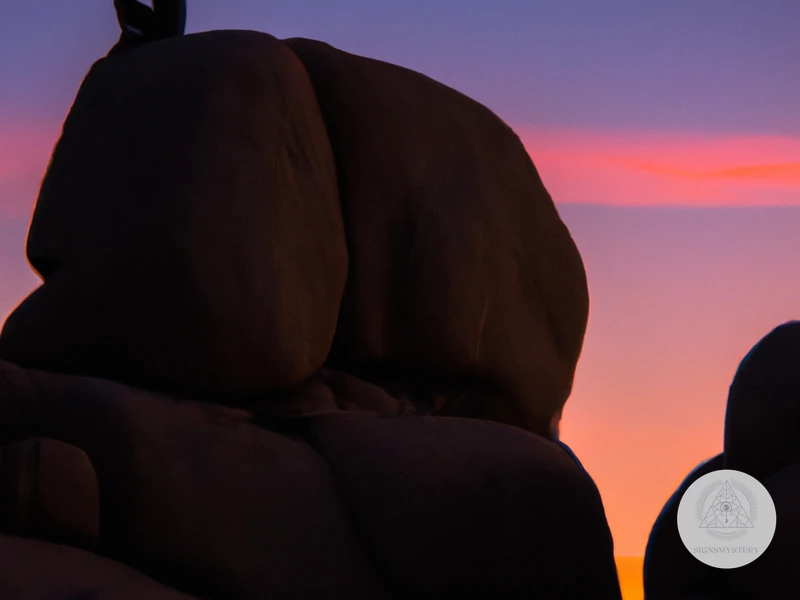
During a vision quest at Joshua Tree National Park, you will spend a significant amount of time connecting with nature. The desert landscape is unique and has a powerful effect on the mind and body. As you spend time in the park, you will notice the vastness of the landscape and the intricacies of the environment. You may encounter flora and fauna that you have never seen before, and this can be a transformative experience.
Some people may also find that connecting with nature gives them a greater sense of purpose and belonging. Being surrounded by the natural world can help individuals feel connected to something greater than themselves, which can lead to a deeper sense of inner peace.
To fully connect with nature during your vision quest, it is important to be fully present in each moment. Take time to notice the colors, textures, and sounds of the environment. Listen to the wind blowing through the trees, the birds singing, and the insects buzzing. Observe the animals and insects going about their day-to-day routines.
During a vision quest, you will also spend a significant amount of time in contemplation and meditation. This can be a powerful tool for personal growth and self-discovery. Taking time to reflect on your thoughts, feelings, and experiences can help you gain a deeper understanding of yourself and your place in the world.
Meditation can also help you develop greater levels of focus and concentration, which can be helpful for achieving your goals. During your vision quest, you may want to try different types of meditation practices, such as guided meditations or mindfulness exercises. Some people also find that yoga or tai chi can be helpful for cultivating a sense of calm and inner peace.
Another aspect of inner work during a vision quest is the exploration of dreams, visions, and insights. Spending time alone in nature can facilitate a deeper connection with the unconscious mind, which can lead to powerful experiences of insight and revelation.
Many people report experiencing vivid dreams or visions during their vision quest, which can provide valuable guidance and direction in their lives. These experiences can be symbolic, and it is important to take the time to reflect on their meaning.
Some people may also receive insights or revelations into their life path or purpose. These can be transformative experiences that lead to greater clarity and direction in a person’s life.
Other Inner Work Practices
In addition to the practices mentioned above, there are many other types of inner work that individuals may choose to engage in during a vision quest. Some people may choose to journal their experiences, which can be helpful for processing thoughts and emotions. Others may choose to engage in creative practices, such as painting, songwriting, or storytelling.
Similarly, some people may choose to engage in physical practices, such as qigong or martial arts, which can help cultivate physical and mental discipline. Whatever practices an individual chooses to engage in, the key is to be fully present in each moment and open to the transformative experiences that can arise during a vision quest.
Connecting With Nature
Connecting with nature is a crucial aspect of a vision quest at Joshua Tree National Park. This park offers an abundance of natural beauty that can serve as a catalyst for introspection and self-discovery. Here are some ways to connect with nature during your vision quest:
- Walking meditation: Take a slow walk and feel the earth under your feet. Be mindful of every step you take and focus on your breath.
- Nature observation: Find a peaceful spot in nature and sit quietly. Observe the colors, textures, and movements around you. Let nature’s beauty sink in and immerse yourself in its peacefulness.
- Wildlife encounters: Joshua Tree National Park is home to a variety of animal species. If you are lucky enough to spot one, observe it from a distance and appreciate its unique qualities.
- Star gazing: Spend an evening gazing at the stars. Allow yourself to feel small in the vastness of the universe and contemplate your place in it.
Connecting with nature can facilitate a sense of oneness with the natural world and help you see yourself as a part of it. This realization can lead to a deeper understanding of your place in the universe and your impact on it.
Contemplation and Meditation
Contemplation and meditation are essential parts of a vision quest. In today’s world, we are constantly surrounded by distractions, and we rarely have time to just sit and be present. During a vision quest, however, you will have plenty of time to be alone with your thoughts and to focus on your inner-self.
Through contemplation and meditation, you can begin to examine your life, your personality, and your relationships. It’s a chance to reflect on who you are, where you are, and where you want to go. When you embark on a vision quest, you’re taking the time to look inward and find a deeper connection with yourself and nature.
Meditation is an effective tool to help calm the mind, focus your intention, and stay present. During a vision quest, you’ll likely have a set time for regular
Subscribe to Our Newsletter
Sign up to receive the latest news and updates.
The goal of this practice is to become more aware, more present, and more in tune with your higher self. You may begin to notice patterns or thought processes that have been holding you back, or you may connect with your strengths and values.
Contemplation and meditation can lead to profound realizations and insights. Sometimes, it helps to pose a specific question that you want to explore during your quiet time. Other times, it is better to simply allow your mind to wander and see where it takes you.
Through this process of deep contemplation and meditation, you can gain a greater understanding of your purpose in life, and how to align your actions with your true desires and values.
Dreams, Visions, and Insights
During a Vision Quest at Joshua Tree National Park, dreams, visions, and insights can be transformative and life-changing. Spending time alone in nature can open up one’s subconscious mind, leading to powerful and vivid experiences.
Dreams and visions can come to one during solo time in the wilderness. These experiences can be vivid, revealing, and even mystical. The desert landscape with its unique rock formations and rugged terrain can inspire awe and wonder. The quiet surroundings and absence of distractions allow one to relax deeply and connect with their inner self.
During solo time, it’s common for people to experience challenging emotions, such as fear, uncertainty, and loneliness. Sometimes, the subconscious mind brings up memories or repressed emotions. However, through this introspection and self-reflection, one can gain profound insights about themselves, others, and the world around them.
Whether through dreams, visions, or deep contemplation, many people report experiencing profound insights during their Vision Quest. These insights can be life-changing and stay with one long after returning back to daily life.
Through the process of reflection and introspection, one can gain clarity on their life purpose, their values, and their goals. People often return from their Vision Quest with a sense of renewed energy, creativity, and direction.
The dreams, visions, and insights that can emerge during a Vision Quest at Joshua Tree National Park can be incredibly transformative and empowering, helping individuals gain clarity and direction in their lives.
Return and Integration
After completing your vision quest at Joshua Tree National Park, it’s essential to return and integrate your experience into your daily life. The following steps will help you to bring your insights into the world and make lasting changes.
One way to integrate your vision quest experience into your daily life is by sharing your insights with others who have also been on a vision quest. This sharing process can occur either in-person or online. Talking about your experiences with others who have shared similar experiences can create a sense of community and support that can be beneficial long after the quest is over.
Another step to integrate your vision quest experience is to reflect on the insights you gained and find ways to apply them to your daily life. This reflects and helps you understand what you learned during your quest and helps you to identify how to put your insights to practical use.
You may have gained new insight and clarity on the direction you want to take in your life, or learned new ways of coping with stress, anxiety, and other emotions. By integrating these insights into your daily life, you can create a new relationship with yourself, your loved ones, and the world around you.
The Impact of a Vision Quest on Your Life
The transformative qualities of a vision quest at Joshua Tree National Park can have a long-lasting impact on your life. By connecting with nature, contemplating, and meditating, you can discover profound insights that may not have been possible in your normal daily routine.
A vision quest is a journey of self-discovery that allows you to tap into your deepest insights and connect with your authentic self. Whether your goal is to find clarity about a particular issue or direction in your life, or to gain an overall sense of well-being, embarking on a vision quest can provide a powerful tool for transformation and inner growth.
Conclusion
A vision quest is a powerful and transformative experience that can help you connect with your true purpose and potential. By preparing mentally and physically, embarking on the journey, engaging in inner work, and integrating your insights into daily life, you can experience lasting change. A vision quest at Joshua Tree National Park is a unique opportunity to explore the natural world, uncover new insights into yourself, and return home with a deeper sense of purpose and clarity about your life journey.
Sharing Insights with the Group
After spending several days alone in the wilderness, you may feel a sense of transformation and self-reflection. As you return to the group, it’s essential to take the opportunity to share your insights with others who have been on their own journey.
Sharing your experiences can be empowering, as it allows you to express your thoughts and feelings and hear feedback from others. This sharing experience is often an important aspect of a vision quest and can lead to deeper connections with others who have gone through similar experiences.
During the sharing session, it’s important to listen actively to each person’s story and empathize with their experiences. This creates a sense of community and can help everyone feel more connected and supported. The insights gained during a vision quest can be profound, and sharing them with others can be both validating and informative.
One way to share your experiences is to engage in a group dialogue. The group can sit in a circle, and each person can take turns sharing their visions, experiences, and insights. While one person is speaking, everyone else should listen attentively, offering supportive feedback and asking questions if needed.
Another way to share your experience is through an artistic expression. You can draw, paint, or create a collage that represents your insights and visions. This creative expression can help you communicate your experience in a nonverbal way.
Lastly, it’s essential to remember that everyone’s experience is unique, and there is no right or wrong way to share your insights. Honoring your experience and being yourself is the most important aspect of sharing with the group.
Examples of Sharing Insights with the Group
Here are some examples of how people might share their insights after a vision quest:
| Example: | Description: |
| Sharing a poem or piece of writing | A person might read a poem or piece of writing that was inspired by their time in the wilderness. |
| Describing a vision | Some people may have had a vivid vision that they want to share with the group and discuss what it meant to them. |
| Talking about insights | People might share insights they gained about themselves, relationships, or life in general and discuss how they plan to incorporate these insights into their daily life. |
| Engaging in a group dialogue | The group might sit in a circle and have a deep conversation about their experiences, asking each other questions, and giving feedback. |
| Using art to express the experience | People might use art to visually represent their experience, such as painting a landscape or creating a collage of images that resonate with them. |
Sharing your insights with the group after a vision quest can be one of the most powerful and transformative experiences of the journey. It allows you to connect with others, gain new insights, and feel supported and heard in a way that is often difficult to achieve in day-to-day life.
Bringing Insights to Daily Life
Bringing insights gained from a vision quest to daily life is a crucial step in making the experience truly transformative. Here are a few ways to integrate what you learned into your daily routine:
- Journaling: Writing down your thoughts and experiences is a powerful tool for reflection and self-discovery. Continue the habit of journaling after your vision quest, focusing on how your insights can be applied to your everyday life.
- Meditation: Incorporating meditation into your daily routine can help you maintain a sense of inner peace and focus. Use the meditation techniques you learned during your vision quest as a foundation for your daily practice.
- Nature: We often lose touch with the natural world in our busy lives, but reconnecting with it can be transformative. Spend time in nature as often as possible, whether it’s a walk in the park or a weekend camping trip.
- Community: Vision quests are often solitary experiences, but the insights gained can be shared with others. Seek out community events or gatherings where you can share your experiences and deepen your connections with others.
- Gratitude: Feeling grateful for the blessings in your life is a powerful way to cultivate joy and contentment. Make a daily habit of reflecting on what you are grateful for and expressing that gratitude to those around you.
Integrating your vision quest insights into your daily life can be challenging, but it is a vital step in harnessing the transformational power of the experience. By adopting these practices, you can continue to grow and evolve long after your vision quest is complete.
The Impact of a Vision Quest on Your Life
After completing a vision quest at Joshua Tree National Park, many people find that the experience has a powerful and lasting impact on their lives. For some, it is a time of great personal transformation and growth. For others, it brings a newfound appreciation for the natural world and a deeper sense of connection to the earth. In this section, we will explore some of the ways that a vision quest can have a lasting impact.
One of the most common ways that a vision quest can impact your life is by providing clarity and perspective. During the solo time, you may gain insights into your life, your purpose, and your path. This new perspective can be empowering and help you to make important decisions with greater confidence. Additionally, the experience of being alone in nature for an extended period can shift your priorities, allowing you to focus on what truly matters.
Another potential impact of a vision quest is improved mental health. Many people find that the quiet, contemplative nature of a vision quest allows them to confront and work through emotional issues. By taking time away from the distractions and stressors of daily life, you may find that you are better able to process difficult emotions and gain a greater sense of inner peace.
A vision quest can also boost creativity and productivity. When you return from a vision quest, you may find that you have renewed energy and motivation to pursue your passions. Insights gained during the solo time can help you to approach problems or creative pursuits from a new angle, leading to breakthroughs in your creative work or daily life.
Finally, the impact of a vision quest can reach beyond the individual and impact the wider community. By connecting with nature and gaining a deeper sense of empathy and compassion, you may find that you are better equipped to make meaningful contributions to society. Additionally, sharing your insights and experiences with others can inspire and uplift those around you.
A vision quest at Joshua Tree National Park has the potential to impact your life in profound and lasting ways. Whether it leads to personal transformation, improved mental health, increased creativity and productivity, or a greater sense of connection to the wider world, the impact of the experience is often felt long after returning to daily life.
Conclusion
In conclusion, embarking on a vision quest at Joshua Tree National Park can be a transformative and life-changing experience. It allows individuals to disconnect from the distractions of daily life and reconnect with nature, leading to a deeper understanding of themselves and their place in the world.
The mental and physical preparations necessary before the journey can be daunting, but they are crucial to ensure a safe and meaningful experience. Once in the wilderness, solo time allows for introspection and reflection, while connecting with nature provides a sense of grounding and interconnectedness.
The dreams, visions, and insights experienced during the quest can provide a new perspective and understanding of one’s life and purpose. Sharing insights with the group and bringing them back to daily life can lead to positive changes in relationships, work, and personal growth.
While a vision quest may not be for everyone, it can be a powerful tool for those seeking personal transformation and spiritual growth. Joshua Tree National Park offers a unique and beautiful setting for individuals looking to embark on this journey of self-discovery.
Overall, a vision quest at Joshua Tree National Park has the potential to provide a profound impact on one’s life, leading to a deeper connection with oneself and the natural world. It is an experience that can be carried with an individual for the rest of their life, providing a sense of purpose and meaning.
Frequently Asked Questions
What is the cost of a vision quest at Joshua Tree National Park?
The cost of a vision quest varies depending on the program and guide, but it can range from a few hundred to a few thousand dollars.
Do I need previous camping experience to go on a vision quest?
While previous camping experience can be helpful, it is not required. Your guide will provide you with basic wilderness survival skills before the quest begins.
What kind of physical shape do I need to be in for a vision quest?
You should be in reasonably good physical shape and able to walk on uneven terrain for several hours. However, the intensity of the quest can be modified to accommodate different fitness levels.
Can I bring my own supplies for the vision quest?
It depends on the program and guide. Some may provide all necessary supplies, while others may require you to bring your own. Be sure to check with your guide ahead of time.
How long does a vision quest typically last?
A vision quest can last anywhere from one to four days or longer. It depends on the program and guide, as well as your individual needs and goals.
Do I have to go on a vision quest alone?
Yes, the solo time during the vision quest is meant to be done alone. However, your guide will be nearby and available if you need assistance.
Can I bring my phone or other electronic devices?
No, electronic devices are not allowed during the vision quest. The goal is to disconnect from technology and connect with nature.
Is it safe to go on a vision quest alone?
While there are inherent risks associated with any wilderness activity, going on a vision quest with an experienced guide can help minimize those risks. Your guide will provide you with safety guidelines before the quest begins.
What can I expect to gain from a vision quest?
While everyone’s experience is unique, a vision quest can provide a sense of clarity, renewal, and connection to nature and oneself. It can also offer insights and new perspectives on personal issues or life goals.
Are there any age restrictions for a vision quest?
Age restrictions vary depending on the program and guide. Some programs may have a minimum age requirement, while others may not allow participants over a certain age. Be sure to check with your guide before booking a vision quest.



